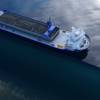Harley Marine Installs Media Wall in Communications Center
Harley Marine Services recently installed an 8 by 6 meter industrial grade LCD screen in the communication center at the new Harley and Lela Franco Maritime Center in Seattle, WA. This state-of-the-art media wall provides a direct portal for Harley Marine’s consolidated dispatch team to access real-time technology systems from both shore and vessel operations.
The communication center is specifically designed to keep the dispatch team better informed with unprecedented access to information. Collected data is transformed into straightforward, easy to read visual aids, giving dispatchers and management an overview of the entire operation.
Powered by a modern super-computer, the system is capable of displaying up to (16) different video inputs and over 1,000 different screen configurations. This cutting edge technology springboards Harley Marine to the forefront of the industry with its comprehensive, real-time communication platform.
Harley Marine Services will utilize the system in several different ways, a few being:
Viewing the HMS vessel command center that blends both commonly available AIS data like tug and barge positions alongside relevant operational information like crewing, product onboard, and safety compliance.
The Harley Marine scheduling view shows the dispatch and operations team a comprehensive overview of all current and upcoming vessel schedules and provides a single system-look across the global HMS fleet.
Normal, low resolution AIS feeds are now brought to life with high-definition views of port operations.
Real-time security cameras across the HMS offices and progressively across the HMS fleet are viewable from a single console.
The media wall is designed to accommodate ship-to-shore information available today as well as expand and change with HMS’ growing operational capacities. The media wall represents Harley Marine’s commitment to being at the forefront of safety management, technology and operational efficiency. Given the screens capabilities today and in the future, the wall will ultimately prove to be essential in both incident management and day-to-day operations.












